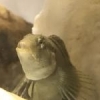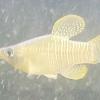Congratulations Andy on your collection success!
As far as Gorilla Glue goes, the reef sections that I built so far have held up well in the aquarium for the most part. A few of the smaller shells eventually fell off (like spat sized ones) but that was because I probably didn't use enough glue. I've removed the reef from the tank several times to try to remove fish when I had to do tank maintenance, and it was pretty solid. There were two overhangs that fell off that I had to repair, so I just used more glue. The first time, I used it pretty sparingly, because I was worried that it wouldn't look natural if you saw any, so I spent a lot of time trimming visible glue off of the shells. However, once algae and other life grows on the structure, it actually looks natural. At first glance, it kind of looks like a bryozoan colony! Anyway, when I repaired the overhangs, I used a lot more glue and it's very solid now. The tank has been set up for two years now.
At first, when I saw a couple of the spat shells fall off, it bugged me. But, as it turns out, a few half spat oyster shells in the substrate looks pretty natural, as an oyster reef might be, along with a few half shells or loose shells laying around. My goal was to mimic a real oyster reef as much as I could.
Shells fall apart on the reef all the time. In fact, in nature, the empty oyster shells that the fish hide in are temporary homes. They are still attached at the hinge, barely, and the fish use their snout and nose to open the shell just a little more so they can squeeze in. Then, they pry open the shell, use their tail to swim into the shell as they push it open. I've observed this in my tank. Eventually, they wear out the hinge and the shell falls apart, and is no longer used as a spawning place, unless there are no other suitable shells nearby. In past videos, I've captured this behavior.
That last point is actually where my tank, now, differs from the reef. During my last repair session, I glued all of the empty oyster shells that weren't glued before together so they wouldn't fall apart, leaving gaps for the fish to crawl into them. They are more like permanent homes now. The fish used them for spawning, but, you no longer see them prying a shell open any longer in my tank. In the future, I may stash some unglued ones in there again as I collect them, just to add that little bit of realism. However, anyone that really watches my vids or looks at my pics wouldn't notice that, probably. For me, it's a maintenance issue, keeping them glued, and having my tank look pretty much the same over time. However, in a reel reef, it's always changing.
I've heard that other glues were effective too. I purchased a bottle of a high end super glue, and also JB Weld, but haven't used them yet. I figured if things started collapsing again, then I'd change tactics. What I like about the JB Weld is that it works underwater and isn't toxic.
But, after 2 years, so far so good.









